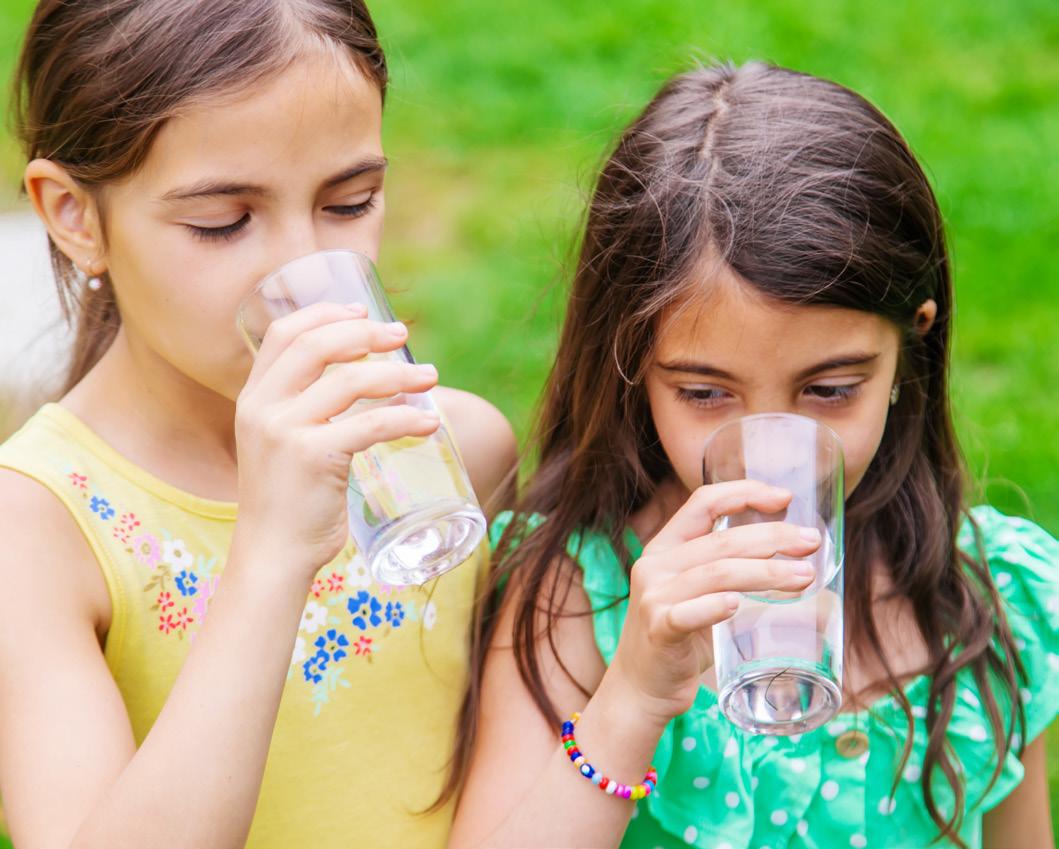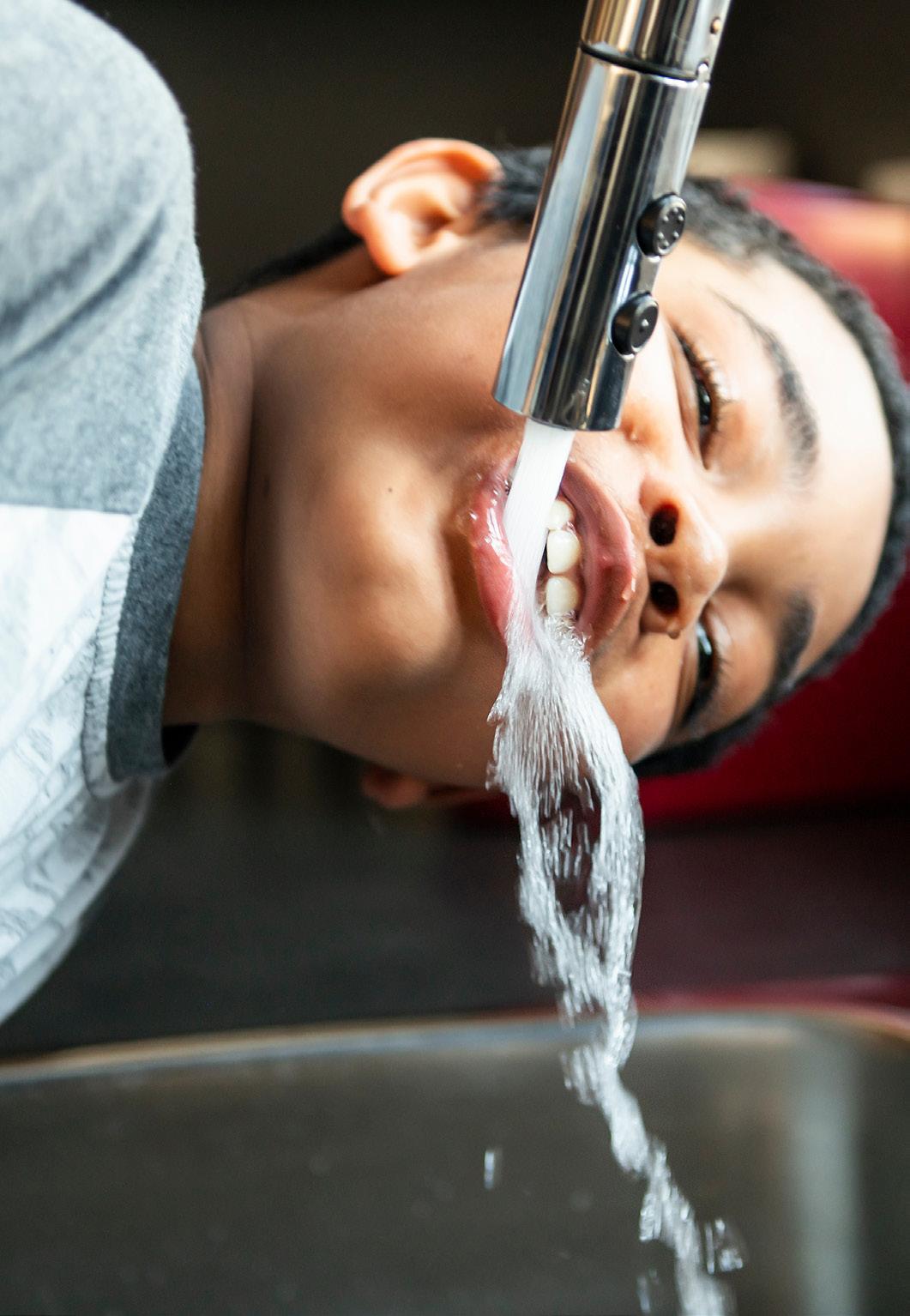
3 minute read
Get to Know Your Source Water
Substances Found in Source Water
The sources of drinking water (both tap water and bottled water) include rivers, lakes, streams, ponds, reservoirs, springs and wells. As water travels over the surface of the land or through the ground, it dissolves naturally occurring minerals and, in some cases, radioactive materials and substances resulting from the presence of animal or human activity.
Advertisement
Contaminants that may be present in source water include:
• Microbial contaminants, such as viruses and bacteria, which may come from sewage treatment plants, septic systems, agricultural livestock operations and wildlife;
• Inorganic contaminants, such as salts and metals, which can be naturally occurring or result from urban stormwater runoff, industrial or domestic wastewater discharges, oil and gas production, mining or farming;
• Pesticides and herbicides, which may come from a variety of sources such as agriculture, urban stormwater runoff and residential uses;
• Organic chemical contaminants, including synthetic and volatile organics, which are byproducts of industrial processes and petroleum production, which also can come from gas stations, urban stormwater runoff and septic systems; and
• Radioactive contaminants, which can be naturally occurring or the result of oil and gas production and mining activities.
In order to ensure tap water is safe to drink, the EPA prescribes regulations that limit the amount of certain contaminants in water provided by public water systems. U.S. Food and Drug Administration regulations establish limits for contaminants in bottled water, which must provide the same protection for human health.
Drinking water, including bottled water, may reasonably be expected to contain at least small amounts of some contaminants. The presence of contaminants does not necessarily indicate the water poses a health risk. More information about contaminants and potential health effects can be obtained by calling the Environmental Protection Agency’s Safe Drinking Water Hotline at 800-426-4791.
Health Concerns
Some people may be more vulnerable to contaminants in drinking water than the general population. Immuno-compromised persons such as persons with cancer undergoing chemotherapy, persons who have undergone organ transplants, and people with HIV/AIDS or other immune system disorders. Some elderly and infants can be particularly at risk from infections. These people should seek advice about drinking water from their health care providers. EPA/CDC guidelines on appropriate means to lessen the risk of infection by Cryptosporidium and other microbial contaminants are available from the Safe Drinking Water Hotline at 800-426-4791.
Information about lead: If present, elevated levels of lead can cause serious health problems, especially for pregnant women and young children. Lead in drinking water is primarily from materials and components associated with service lines and home plumbing. DWSD is responsible for providing high quality drinking water but cannot control the variety of materials used in plumbing components. When your water has been sitting for several hours, you can minimize the potential for lead exposure by flushing your tap for 30 seconds to 2 minutes before using water for drinking or cooking. If you have a service line that is lead, galvanized previously connected to lead, or unknown but likely to be lead, it is recommended that you run your water for at least 5 minutes to flush water from both your home plumbing and the lead service line. If you are concerned about lead in your water, you may wish to have your water tested. Information on lead in drinking water, testing methods, and steps you can take to minimize exposure is available from the Safe Drinking Water Hotline at 800-426-4791 or at http://www.epa.gov/safewater/lead.
Source Water Protection
Your source water comes from the Detroit River, situated within the Lake St. Clair, Clinton River, Detroit River, Rouge River, Ecorse River, watersheds in the U.S. and parts of the Thames River, Little River, Turkey Creek, and Sydenham watersheds in Canada. The Michigan Department of Environment, Great Lakes and Energy (EGLE) in partnership with the U.S. Geological Survey, the Detroit Water and Sewerage Department, and the Michigan Public Health Institute performed a source water assessment in 2004 to determine the susceptibility of GLWA’s Detroit River source water for potential contamination. The susceptibility rating is based on a seven-tiered scale and ranges from very low to very high determined primarily using geologic sensitivity, water chemistry, and potential contaminant sources. The report described GLWA’s Detroit River intakes as highly susceptible to potential contamination. GLWA’s water treatment plants that service the city of Detroit and draw water from the Detroit River have historically provided satisfactory treatment and meet drinking water standards.
GLWA has initiated source-water protection activities that include chemical containment, spill response, and a mercury reduction program. GLWA and DWSD participate in the National Pollutant Discharge Elimination System (NPDES) permit discharge program and has an emergency response management plan. GLWA has updated Surface Water Intake protection plans for the Belle Isle and Fighting Island intakes. The plans have seven elements that include: roles and duties of government units and water supply agencies, delineation of a source water protection areas, identification of potential sources of contamination, management approaches for protection, contingency plans, siting of new water sources, public participation, and public education activities. If you would like to know more information about the Source Water Assessment report, please, contact GLWA at 313-926-8102.
Since 2018, DWSD has been investing about $100 Million annually on water and sewer upgrades and stormwater management. Below is a snapshot of the progress through 2022.
311 Miles
Water system assessed

97 Miles
Water mains replaced or lined
2,078 Lines
Lead service lines replaced
311 Miles
Sewer system miles assessed
67 Miles
Sewer pipes lined or replaced
246 Segments Sewer segments repaired
19 Projects Installed Stormwater management
83.8 Million Gallons
Stormwater managed annually





